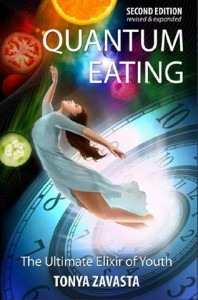Concerns over the safety and quality of tap water have driven health-conscious consumers to bottled water in the effort to avoid pollutants and chemical byproducts increasingly showing up in household water supplies. I am always asked what water is the best.
EPA regulations for household tap water allow for quantities of a long list of chemicals to be present. Surprisingly, the FDA, with oversight of bottled water quality, permits the same levels. Bottled waters are legally allowed, under FDA regs, to contain the same levels and types of contaminants as tap water. There are also some chemicals which could be present in the water supply that are not even regulated, so there is no “safe level” currently determined. Already, then, the hackles of suspicion rise: Is there any advantage in bottled water over tap water?
Recently, an organization known as the Environmental Working Group (EWG) commissioned laboratory tests on ten major brands of bottled water, with tests conducted at the University of Iowa Hygienic Laboratory. The water was purchased in nine different states. Tragically, the bottled waters, taken together, were found to contain 38 chemical pollutants. More than 1/3 of the chemicals found are among those not regulated in bottled water.
A partial list of the contaminants…
pharmaceuticals
caffeine
heavy metals, including arsenic
by-products of chlorination
radioactive isotopes, including the known carcinogens radium228 and strontium90
fluoride
nitrates
ammonia.
Besides the industrial pollutants found in the water, researchers detected also substances such as acetaldehyde, a common contaminant released by certain types of plastic during overheating.
Lax labeling laws allow bottled water manufacturers to avoid disclosing sources of water, such as a public water system, by using the words purified, deionized, or distilled. The EPA’s website states:
“Some bottled water is treated more than tap water, while some is treated less or not at all. Bottled water costs much more than tap water on a per gallon basis...Consumers who choose to purchase bottled water should carefully read its label to understand what they are buying, whether it is a better taste, or a certain method of treatment.” (EPA 2007b)
When it comes to tap water, consumers are given reports each year on the quality of their tap water, but bottled water manufacturers are not required to do so. Thus the public at large is quietly led to believe they are purchasing a pure product of superior quality.
Jan Houlihan, Vice President for Research at EWG, states, “It's Buyer beware with bottled water. The bottled water industry promotes its products as pure and healthy, but our tests show that pollutants in some popular brands match the levels found in some of the nation’s most polluted big city tap water systems. Consumers can’t trust that what’s in the bottle is anything more than processed, pricey tap water.” For more information, visit www.ewg.org .
Then add that, with the increase of bottled water consumption, consequent increase in litter and disposal of millions of plastic bottles becomes its own political (and health) issue. Clearly, bottled water is not the answer!
In my book Quantum Eating I agree with nutritional scientists who have begun to question the long-held recommendation of drinking 64 ounces of water daily, suggesting instead that you should drink only when you are thirsty. I believe from my own experience and the testimonial of others that if you eat enough fruits and vegetables, you will never be thirsty.
According to the Institute of Medicine, most people actually do get plenty of fluids. Their verdict: Drink when thirsty, and, instead of gulping water, reduce salt intake. I think they are getting closer to seeing the whole picture. On the raw food lifestyle, we (ideally) do not get any salt, so we are rarely thirsty. Should we conclude that we shouldn't be drinking so much free water?
If you do drink water, there are several factors to consider. Water from pure springs, lakes or wells introduces a lot of inorganic minerals into your body that, in time, will form cement-like deposits in your joints, gallbladder and kidneys, and clog your arteries. Distilled water should be a viable alternative. But there is evidence that it is basically 'dead' water because distilling causes it to lose its structure. There are also claims that it can leach small amounts of calcium and other minerals from the body.
However, turning dead water into living water is only a matter of exposing it to sunlight for several hours, or adding a few drops of fresh squeezed juice. You can even do it by adding some crushed blades of grass. I hope you see in this general recommendation one more proof: the miracle is in raw foods! If even a drop can restore water, why not restore yourself with a whole glass of fresh juice or green smoothie?
A good blender is a must for making green smoothies on the raw food regimen.
So what water is the best? My unhesitating answer: the water that comes packaged in fruits and vegetables. People are usually shocked when they learn that I do not drink plain water at all. Am I dehydrated: Not at all. I have two cups of fresh-squeezed vegetable juice every morning and two cups of green smoothie for my second meal. And I might have half a watermelon or ten tangerines in between when they are in season. With raw food, my body is getting the most biologically intelligent water.
It is very refreshing to know that not only am I experiencing superior health on the raw food diet with the Quantum Eating plan, which eliminates drinking plain water, but I am avoiding unnecessary expense as well.
- Log in to post comments
